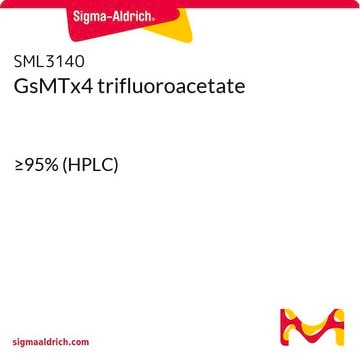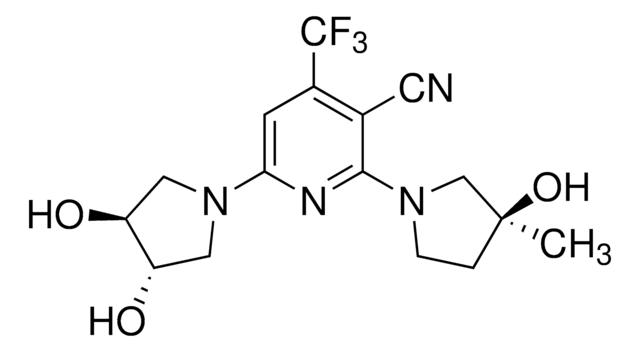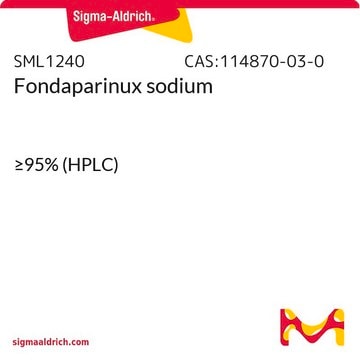推荐产品
一般描述
GlucoseCy5 is a cell-permeable, Cy5-linked 1-amino-1-deoxy-β-glucose fluorescent tracer. It is used for glucose transporter (GLUT)-mediated molecular sensing and bioimaging. GlucoseCy5 demonstrates superior specificity, sensitivity, and non-toxicity over 2-NBDG. λ emission & excitation ~ 644 nm & 665 nm. Suggested optimum concentration and incubation for cellular uptake: 50 μM & 20 min.
应用
GlucoseCy5 has been used as a component in serum-free Dulbecco′s modified eagle medium (DMEM) for fluorescence-activated cell sorting (FACS) and glucose-uptake assay.
生化/生理作用
fluorescent tracer for glucose transporter (GLUT)-mediated molecular sensing and bioimaging
储存分类代码
11 - Combustible Solids
WGK
WGK 3
闪点(°F)
Not applicable
闪点(°C)
Not applicable
历史批次信息供参考:
Metabolic support of tumour-infiltrating regulatory T cells by lactic acid
Watson MJ, et al.
Nature (2021)
Hu Xu et al.
Biochemical and biophysical research communications, 474(2), 240-246 (2016-04-02)
Two novel cyanine-based 1-amino-1-deoxy-β-glucose conjugates (Glu-1N-Cy3 and Glu-1N-Cy5) were designed, synthesized and their fluorescence characteristics were studied. Both Glu-1N-Cy3 and Glu-1N-Cy5 accumulate in living HT29 human colon cancer cells, which overexpress glucose transporters (GLUTs). The cellular uptake of the bioprobes
Transcriptional metabolic reprogramming implements meiotic fate decision in mouse testicular germ cells
Zhang X, et al.
Cell Reports (2023)
McLane J Watson et al.
Nature, 591(7851), 645-651 (2021-02-17)
Regulatory T (Treg) cells, although vital for immune homeostasis, also represent a major barrier to anti-cancer immunity, as the tumour microenvironment (TME) promotes the recruitment, differentiation and activity of these cells1,2. Tumour cells show deregulated metabolism, leading to a metabolite-depleted
Xiangyin Liu et al.
Biochemical and biophysical research communications, 480(3), 341-347 (2016-10-26)
Two novel fluorescent bioprobes, namely, 6N-Gly-Cy3 and 6N-Gly-Cy5, were designed and synthesized for real-time glucose transport imaging as well as potentially useful tracer for galactokinase metabolism. The structure of the bioprobes was fully characterized by 1H NMR, 13C NMR, IR
我们的科学家团队拥有各种研究领域经验,包括生命科学、材料科学、化学合成、色谱、分析及许多其他领域.
联系技术服务部门
![2-脱氧-2-[(7-硝基-2,1,3-苯并恶二唑-4-基)氨基]-D-葡萄糖 ≥97% (HPLC)](/deepweb/assets/sigmaaldrich/product/structures/104/527/40bd5a41-ebc4-484e-a10e-891fecfaea79/640/40bd5a41-ebc4-484e-a10e-891fecfaea79.png)






